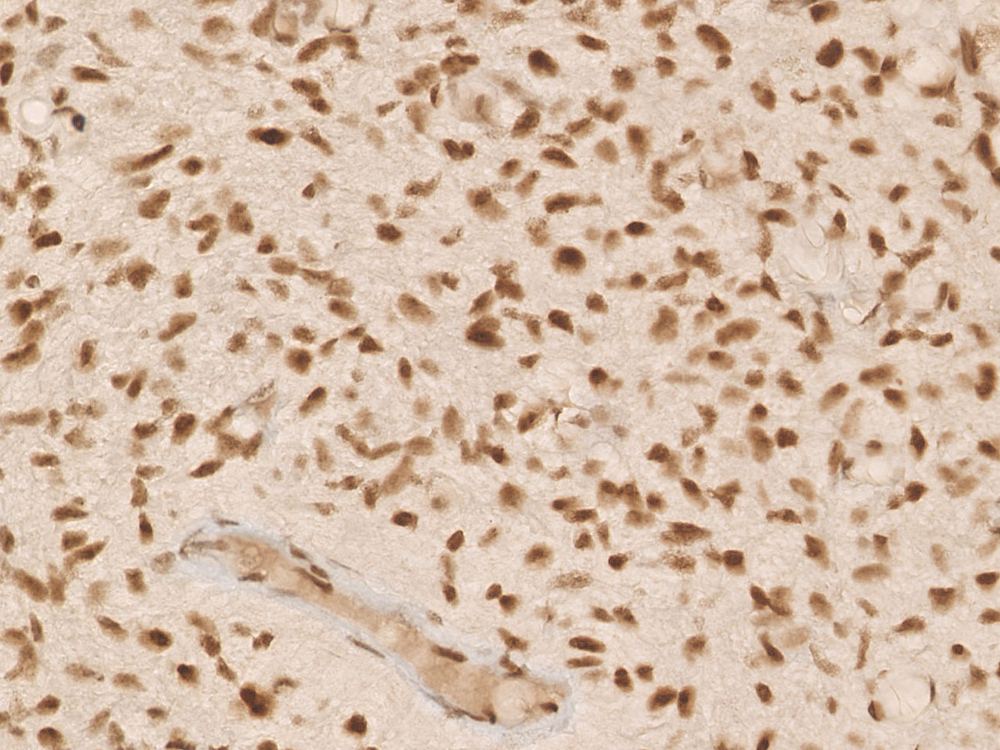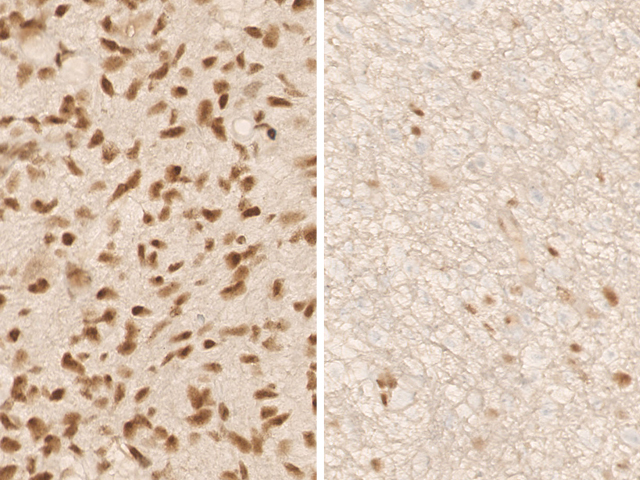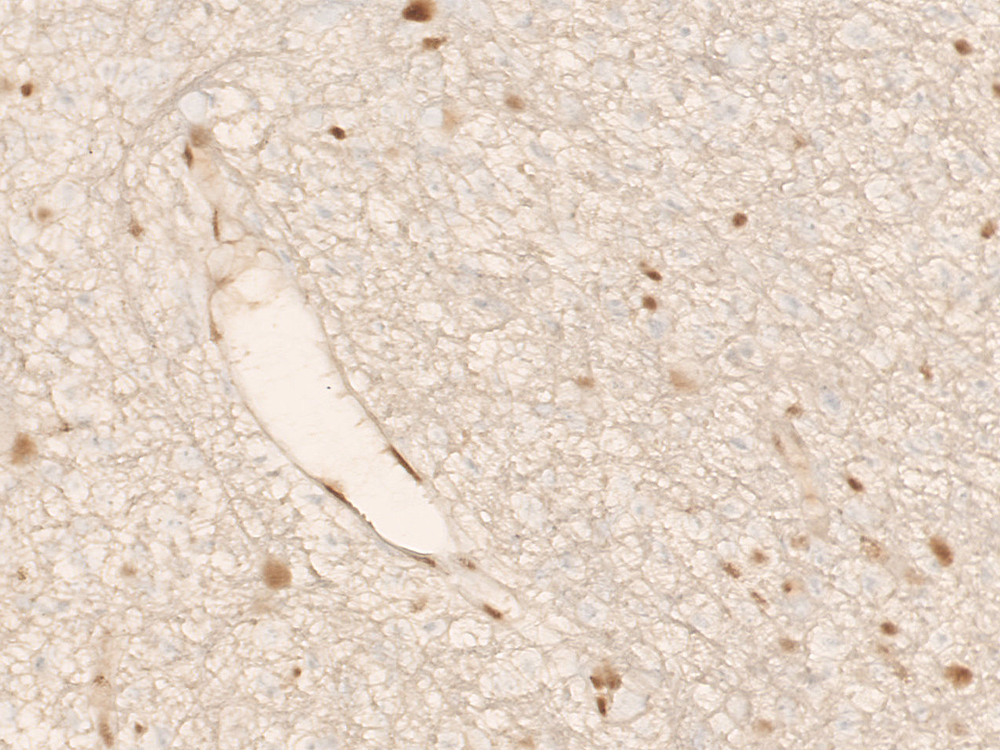Anti-ATRX (Hu) from Mouse (Clone: AX1)
- Images (3)
| Article Name: | Anti-ATRX (Hu) from Mouse (Clone: AX1) |
| Biozol Catalog Number: | DNA-DIA-AX1 |
| Supplier Catalog Number: | DNA-DIA-AX1 |
| Alternative Catalog Number: | DNA-DIA-AX1 |
| Manufacturer: | dianova |
| Host: | Mouse |
| Category: | Antikörper |
| Application: | IHC |
| Species Reactivity: | Human |
| Immunogen: | Rekombinantes Protein fragment von human ATRX |
| Conjugation: | Unconjugated |
| Alternative Names: | Transcriptional regulator ATRX,ATP-dependent helicase ATRX,X-linked helicase II,X-linked nuclear protein,XNP,Znf-HX,ATRX,RAD54L,XH2, ATRXBundle |
| Anti-ATRX (Hu) aus Maus (Klon: AX1), IgG1/k, Unconjugated, Mouse, Monoclonal |
Antibody clone AX1 reacts specifically with ATRX in tissue sections from standard formalin-fixed brain tumor specimens.
BackgroundATRX is a member of the Snf2 family of helicases/ATPases, which contribute to the remodeling of nucleosome structure. ATRX mutation, IDH1 mutation and chromosomal 1p/19q co-deletion are key molecular factors for the subtype diagnosis of diffuse gliomas. ATRX mutations in gliomas result in the loss of nuclear ATRX expression, which can be diagnosed by IHC analysis. Loss of ATRX expression is close to being mutually exclusive to 1p/19q co-deletion. Consequently, ATRX immunohistochemistry can be performed to replace laborious analysis of 1p/19q status by FISH techniques. Combined immunohistochemistry of ATRX and IDH1R132H substitutes molecular testing. Astrocytoma very often harbour ATRX-mutations (>90%), wheras Oligodendroglioma typically do not (<5%). The routine practical approach for diagnosing astrocytomas and oligodendrogliomas begins with perfoming IHC for ATRX and IDH1 R132H expression. Stepwise analysis of molecular parameters with initial IHC for ATRX and IDH1 R132H followed by 1p/19q analysis and then by IDH sequencing significantly reduces the number of molecular tests required for unequivocal diagnosis (Reuss et al., 2015).
Instructions for UseImmunohistochemical staining of standard formalin-fixed paraffin sections Deparaffinize and rehydrate according to standard procedures. Heat induced epitope retrieval (HIER) is required. For immunohistochemical detection different techniques can be used: Indirect immunoenzyme labeling with a secondary antibody conjugate, biotin/(strept)avidin-based detection, soluble enzyme immune complex or polymer-based detection. To detect antibody, follow the instructions provided with the particular visualization system. The antibody is suited for immunohistochemical staining using automated platforms. Use the antibody at 1:100 -1:200 dilution for 30min at RT.
Product Specifications
Intented use / regulatory status Europe: For in Vitro Diagnostic Use / All other countries: For Research Use only |
| Application Dilute: | Histo-/Zytochemie 1:100 - 1:200 |




